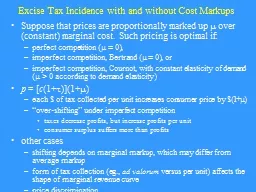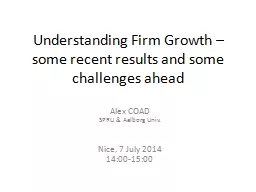PPT-Firm markups and industry concentration: Is there a problem?
Author : yoshiko-marsland | Published Date : 2018-11-03
Technology and Policy Research Initiative conference July 23 2018 Nancy L Rose MIT amp NBER Overview Innovative set of papers that inform the debate Patterns of
Presentation Embed Code
Download Presentation
Download Presentation The PPT/PDF document "Firm markups and industry concentration:..." is the property of its rightful owner. Permission is granted to download and print the materials on this website for personal, non-commercial use only, and to display it on your personal computer provided you do not modify the materials and that you retain all copyright notices contained in the materials. By downloading content from our website, you accept the terms of this agreement.
Firm markups and industry concentration: Is there a problem?: Transcript
Download Rules Of Document
"Firm markups and industry concentration: Is there a problem?"The content belongs to its owner. You may download and print it for personal use, without modification, and keep all copyright notices. By downloading, you agree to these terms.
Related Documents














